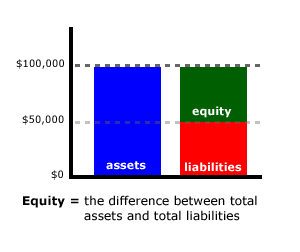Accounting 101: Balance Sheet Basics
By Julie King | October 31, 2001
Two financial statements are used by financial institutions to evaluate a company's loan application, the Income Statement and the Balance Sheet.
The Income Statement shows the sales (incoming revenues) and expenses over a set period of time, and is a good indicator of the profitability of a business during a particular period, as it shows the net result when the sales of the business are put against its expenses.
But it is your Balance Sheet that will help you understand your cash positionand the financial position of your company at a given moment in time. The Balance Sheet is a baramotre of your cash position and viewed as a series of documents, the Balance Sheet can help you understand when you are getting paid, how much inventory you are holding and how much debt you have.
In this article, we take a closer look at the Balance Sheet and what the numbers in different areas of the Balance Sheet represent.
Assets
Assets are anything with commercial value that your business owns. They are divided into three categories: current assets, fixed assets, and other assets.Current assets are cash, accounts receivable, inventory, and other assets that will likely be turned into cash, bartered, exchanged, or converted into an expense within a year during the normal course of business. Included in the “other current assets” category are loans to shareholders, also known as due to shareholders.
Some business owners will not pay themselves a salary, preferring to take drawings, which they must deal with at year-end. In the current assets section, due to shareholder amounts may artificially inflate current assets if you plan to convert them to bonuses, dividends or management fees at year-end, at which time they become expenses of the business.
Fixed assets have commercial value but are not expected to be consumed or converted into cash in the normal course of business. They are long-term, more permanent or "fixed" items, such as land, building, equipment, fixtures, furniture, and leasehold improvements.
Fixed assets often decrease in value (depreciate) over time due to wear and tear from use. The federal government allows businesses to depreciate items for tax purposes, and it has defined specific depreciation rates for different categories of fixed assets. On your balance sheet, therefore, you will see the initial value of the asset, the amount of accumulated depreciation, and finally the net depreciated value of the asset.
Example of a fixed asset on the balance sheet:
| Vehicle | $28,000 |
| Accum Deprec - Vehicle | $-8,500 |
| Total Vehicle | $19,500* |
Other assets are things that don't fit into either of the above two categories, yet still belong on the balance sheet. They include things like prepaid expenses, which have value but are not fixed or necessarily to be converted into cash value during the current business year.
Liabilities
Liabilities are company debts or obligations to outside parties as a result of goods or services that were transferred to your company on a specific date that has already passed. Current liabilities are the portion of those obligations that are to be paid out during the course of the year, while long-term liabilities are the portion of your company's obligations that extend beyond that timeframe.
Current liabilities include accounts payable, accumulated taxes and payroll liabilities, and the current amount owing on business loans and/or leases.
Long-term liabilities, meanwhile, include the balance of your loans, leases, and other liabilities beyond the current calendar year.
The Intangibles
While Intangible Assets do not appear directly on your balance sheet, they can be a significant factor when one looks to buy or sell a business or part of the business. Intangible assets include things like good will; intellectual property such as copyrights, trademarks, patents; leases; franchises; permits and so on.
While you do not list these assets on your balance sheet, they are reflected in the sense that they enable you to maintain profit margins and market share, so in turn they show up on the current assets section of your balance sheet through the revenue and profits they create.
Equity
Something that is often difficult for new entrepreneurs to grasp is the way equity is calculated on the balance sheet, where the total assets always equal the total liabilities plus equity.
In other words, your company's equity is equal to the value of its total assets minus its total liabilities. If the business assets are greater than the liabilities, which is hopefully the case, then the equity of the business is the positive difference between the two numbers.

Sample equity calculation:
On Company ABC's Balance Sheet, the Total Assets are $100,000, while the Total Liabilities are $40,000. In this case, the difference between the assets and liabilities is $60,000. Since equity is equal to this difference, the equity of Company ABC at that time is $60,000.
If Company ABC had Total Liabilities of $50,000, with its Total Assets staying at $100,000, then the equity of Company ABC at that time would be $50,000. The increase in the total liabilities of the company in comparison to its total assets causes the equity of the business to drop.
For more information on business financials and accounting essentials for business owners, be sure to read Financial Ratios Revisited, which outlines the ratios most commonly used by the bank to assess your credit application.






